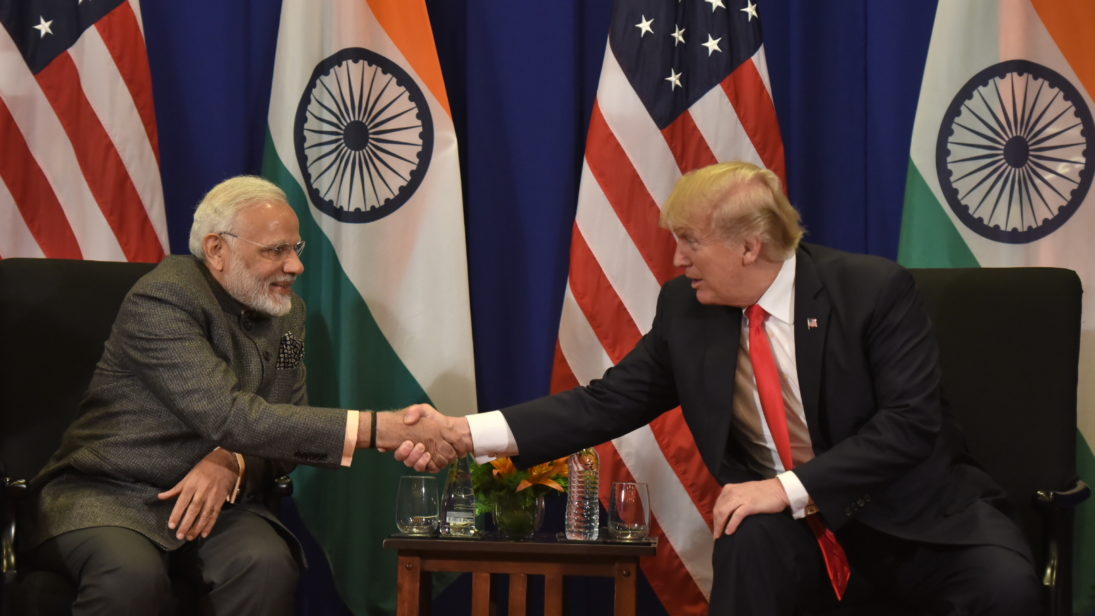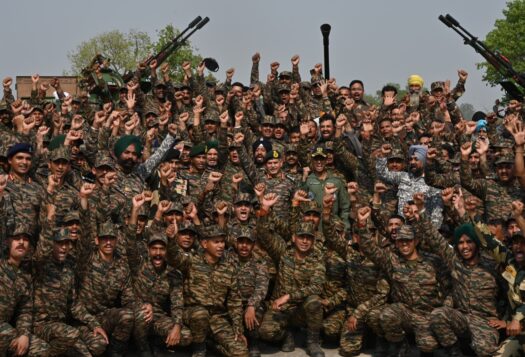
Going by the famous American expression “third time’s the charm,” the twice-postponed Indo-U.S. 2+2 dialogue is the awaited event of the year, finally taking place this week in New Delhi. The External Affairs and Defense Ministers of India, Sushma Swaraj and Nirmala Sitharaman, will meet their U.S. counterparts, Secretary of State Michael Pompeo and Secretary of Defense General James Mattis, with the objective of strengthening strategic relations. However, the future trajectory of the bilateral relationship will be based upon the clarity in exchange of ideas between the two countries, especially with respect to their security objectives in the region.
Bilateral Dynamics
The Indo-U.S. bilateral strategic relationship has matured significantly over the past decade or so. The United States played a crucial role in getting India a Nuclear Supplier’s Group waiver before the two countries finalized an agreement on civilian nuclear cooperation in 2008. The United States also pushed for India’s membership in other export control regimes such as Wassenar Group, Australia Group, and Missile Technology Control Regime, all of which India is now a proud member of. More recently, the United States granted STA-1 status to India, which will enable trade of sensitive dual-use technologies. This exception was given to India as a ‘special case’ since only members of all four export control regimes can avail this status and it brings India at par with America’s NATO allies. Further, the two countries have increased their military coordination with several bilateral and multilateral level exercises over the years.
If the United States wants Asia secure both in its continental and maritime domains, helping countries like India strengthen their capabilities will be a better strategy than seeking a relationship on a conditional or transactional basis.
The focus of the upcoming 2+2 dialogue is to build on this existing cooperation and take the relationship forward by agreeing to enabling foundational agreements that the United States signs with its defense partners. These agreements allow greater interoperability between the Indian and American militaries. India has signed two of the four agreements, the General Security Of Military Information Agreement (GSIMOA) in 2002 and the Logistics Exchange Memorandum of Agreement (LEMOA) in 2016. The third, Communications Compatibility and Security Agreement (COMCASA), has been tweaked from its earlier form CISMOA to make it India-specific and is expected to be considered for signing soon along with the Basic Exchange and Cooperation Agreement (BECA) once India is relieved of concerns regarding security of its geospatial data and intelligence.
Additionally, the two countries are expected to discuss defense deals for missiles, drones, and helicopters worth over $5 billion. A senior US official has also pointed out that there may be discussions on increasing the scope and complexities of military exercises as well as augmenting the 2+2 dialogue for continuous exchange of ideas at the personnel-level between the involved ministries/departments in India and the United States.
Several scholars believe that the India-United States relationship is capable of maintaining itself despite irritants such as trade and economics differences (read WTO disputes, waivers on steel and aluminum, etc.) and immigration issues. However, there are still some hurdles that the two sides will have to navigate as they steer this relationship forward in the upcoming meeting: Pakistan and its role with respect to peace building in Afghanistan, the China factor, and India’s defense trade with Russia. Each of these countries share varying degree of kinetics with New Delhi and Washington. Issues such as not providing India a Countering America’s Adversaries Through Sanctions (CAATSA) waiver due to its significant arms trade with Russia and imposing secondary sanctions on it due to Iran are being highlighted as the United States arm-twisting India in order to pursue its own national interests. How India and the United States reconcile their mutual bilateral interests with ties they have with each of these countries, which often vary and sometimes clash with each other, is yet to be seen.
Need for Clarity
Both countries share similar democratic values, respect international norms, and aspire for regional peace and stability. But to achieve these goals, there has to be a clear understanding of each other’s position as well aspirations.
It is apparent that India and the United States share convergences on the importance of freedom of navigation in the Indo-Pacific, regional stability within Asia, and so on but that doesn’t automatically translate into clarity on mutual interests and objectives. On the one hand, India wants to secure its land and maritime borders and has been proactive regarding regional security issues of importance, both with regard to land and sea. But India cannot afford to ruffle its adversaries’ feathers prematurely given the current status of India’s defense capabilities–recent reports highlight that the country cannot afford a two-front war with China and Pakistan. India also needs to find a balance between indigenous solutions for defense manufacturing and fulfilling the glaring deficiencies plaguing its arms and weapon systems. New Delhi is yet to provide a clear vision of its larger security objectives, both domestically and regionally, as well as its plan to address the gaps in its defense capabilities. Candor and transparency on these issues during the 2+2 meeting might help U.S. officials assess the areas where they can contribute towards India’s growth, in terms of sale of weapon platforms as well as related R&D. This might also help avoid lofty expectations on both sides.
Similarly, the United States needs to come clean on the nature of the strategic partnership it wants with India. As a major defense partner, expecting India to purchase only U.S. weapon systems in the future will be seeing the relationship from a myopic lens. But more importantly, there should be a frank discussion on whether both sides converge on what constitute threats in the region, and whether the two countries would continue to collaborate even when they don’t agree on certain issues.
As I have argued elsewhere, if the United States wants Asia secure both in its continental and maritime domains, helping countries like India strengthen their capabilities will be a better strategy than seeking a relationship on a conditional or transactional basis. The United States can then collaborate with these better-equipped countries to contribute to regional security alongside it.
Conclusion
Defense trade should be seen as the means to a deeper bilateral strategic relationship and not as an end. Both countries share similar democratic values, respect international norms, and aspire for regional peace and stability. But to achieve these goals, there has to be a clear understanding of each other’s position as well aspirations. Facing the difficult questions about their own locus and expectations from the other in the upcoming meeting can be the first step towards deepening their strategic engagement in a meaningful way.
***
Image: MEAphotogallery via Flickr


